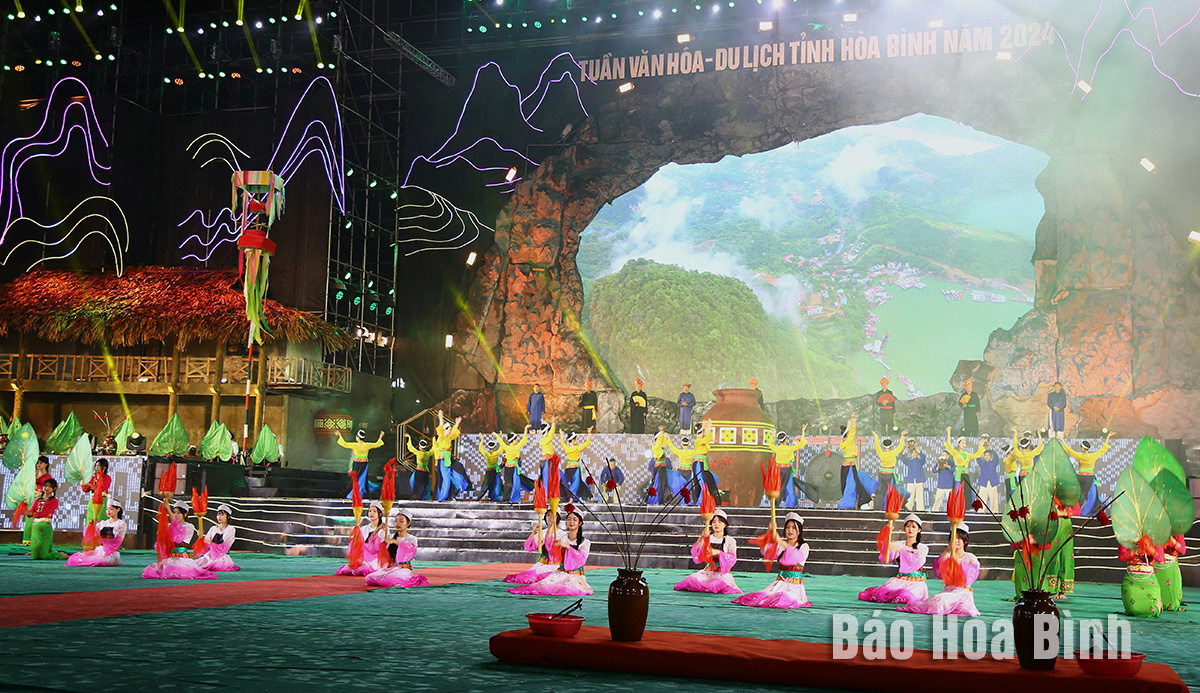



The 2024 Culture and Tourism Week serves as a platform to showcase Hoa Binh’s rich heritage and hospitality to domestic and international visitors.
The provincial authorities have actively disseminated information on the country’s cultural diplomacy strategy to 2030 and the provincial plan that outlines its external work in the realm of culture for 2022-2026. Accordingly, Hoa Binh has chalked out specific annual and multi-year tasks, while proposing concrete actions for preparing a national scientific dossier on its Mo Muong cultural heritage for submission to UNESCO.
At the beginning of 2024, the provincial Department of Culture, Sports, and Tourism, in coordination with the Vietnam National Academy of Music and the Department of Cultural Heritage, submitted the Mo Muong dossier to the national cultural heritage council. The dossier is now awaiting approval from the Prime Minister before being officially forwarded to UNESCO. Concurrently, a plan was introduced to preserve and promote the heritage locally.
Hoa Binh has also worked to integrate cultural diplomacy with political and economic activities. Last year’s notable cultural and artistic events in 2024 include a performance tour by the provincial ethnic art troupe serving soldiers stationed in Truong Sa and DK1 platform; a mobile exhibition on Hoa Binh’s contribution to the Dien Bien Phu Victory; a collaborative event with the Indian Embassy to celebrate International Day of Yoga in the province.
To further elevate its tourism sector, Hoa Binh has actively engaged in strategic partnerships. Key initiatives included its attendance at the National Tourism Year opening ceremony in Dien Bien, its engagements in celebrations marking the 10th anniversary of UNESCO’s recognition of the Trang An scenic landscape complex in Ninh Binh, and its organisation of a fam trip delegation surveying tourism sites in Thanh Hoa.
Hoa Binh is also embracing digital transformation to enhance tourism promotion and communications. The province has launched a smart tourism portal at http://hoabinh.tourism.vn, digitised 33 tourist sites and accommodations, and published nearly 400 news articles, images, and English-translated content to showcase local attractions.
According to the provincial Department of Culture, Sports, and Tourism, Hoa Binh welcomed 4.35 million visitors last year, exceeding its annual target by 3.5%. This figure includes 510,000 foreign and 3.84 million domestic travelers, marking year-on-year increases of 13.3% and 9.5%, respectively. Tourism revenue neared 4.74 trillion VND (185.66 million USD), up 17.9% annually.
According to Vice Chairman of the provincial People’s Committee Nguyen Van Chuong, continued efforts will be made to promote Hoa Binh’s cultural heritage and tourism offerings to domestic and international audiences. The province will also strengthen existing partnerships with Houaphan province (Laos), Töv province (Mongolia), and Gimje city and Ulju district (the Republic of Korea).